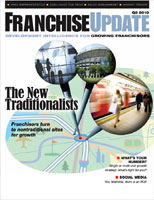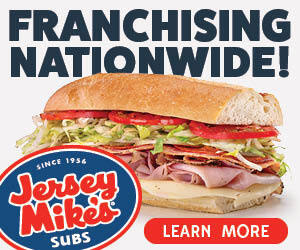Where's the Money?: Who Should Solve the Problem of Franchisee Access to Capital?
Each year franchising needs debt capital in excess of $10 billion to fund more than 30,000 new units and transfers of existing units. That's a lot of money, and the lending community doesn't seem that likely to meet the demand--even though collectively there's ample lending capital available. It's clear that access to capital will be an issue for the franchise community for the next few years at the very least.
Who has responsibility for resolving this shortfall? The stakeholders are the franchisee, the lender, Congress, and the franchisor. Let's look at what each of them is likely to do, or can do, to solve the lending problem.
Franchisees are in the least influential position. They can try to improve their business operating performance and do a better job of packaging their loan request (financials, business plan, and the like). These steps are necessary but will only marginally increase the likelihood of obtaining capital in the short term. Over a few years, improving their business operating performance will make a big difference, but that doesn't help them gain access to capital now.
What about lenders? When demand exceeds supply, freely functioning markets use price to adjust any imbalances. In lending, however, price adjustments are a bit complicated. Loan pricing goes beyond changes in interest rates, involving other loan terms such as advance rates, collateral, proven performance, and so forth. Lenders assess risk and create term sheets that reflect the risk they perceive. Their ultimate risk is that they don't get repaid, which is why lenders use risk rating systems for all loans. They do so to determine, among other things, the level of reserves they need to cover losses. When a borrower's financial position is adversely changed, lenders downgrade the risk rating and increase their reserves. Lenders that are regulated (e.g., commercial banks) are periodically reviewed, and those reviews may lead to adjustments in their ratings and changes to their reserves. All of which is to say that supply/demand in loan markets operates with less than full freedom. With loan profits taking a back seat to capital preservation, don't expect lenders to ease loan terms anytime soon.
Congress can enact laws that affect lending by changing the risk equation banks use to determine whether or not to make loans. However, that doesn't work for conventional lending, because with conventional loans lenders still have all the risk. We saw how Congress encouraged regulators to ease up on banks and brought major bank leaders to hearings for a good browbeating--which is about all they can do on the conventional lending side. How well did that work?
Congress is more influential when it passes legislation that changes the risk equation. They can do that with SBA lending, which provides guarantees for some of the risk, and that's what they did. During this economic downturn, when lenders consider lending to be higher risk, Congress didn't change the maximum SBA loan interest rate. Rather, it increased the guarantee amount from 75 to 90 percent, in effect saying that an extra 15 percent guarantee was enough to offset the higher economic risk. So far it seems to be working as SBA lending has risen. If the lending cap of $2 million were raised to the Senate-proposed and Administration-supported $5 million, considerably more SBA loan activity would take place. Even with this change, the bottom line is that there is far more need for small business lending than there is willingness by banks to provide loans.
So Congress is trying to be helpful. With an extension of the 90 percent guarantee, and if the loan cap goes to $5 million, the lending gap will be quite a bit less for franchising. As noted above, we know lenders aren't likely to do much more in the next few years because of their perceptions of risk. To assess risk, lenders look in the rearview mirror at borrower financial performance, so until borrower performance justifies it, more favorable credit extension terms are a ways off.
That leaves us with franchisors to help reduce the lending gap. There are direct actions franchisors can take as well as indirect ones. For decades some franchisors have had internal lending programs or partial loan guarantee programs for franchisees. Increasingly, we are seeing franchisors explore such programs, particularly partial guarantee programs. If the franchisor's balance sheet is strong enough, if the franchise system's performance is well above average, and if the franchisor wants to continue new unit development and/or support ownership transfers among franchisees, it makes sense to consider such programs to enhance access to capital.
Indirect actions are also being employed much more actively during this credit crunch. Because SBA lending is prevalent for the reasons cited above, there has been a rapid increase in SBA Franchise Registry applications and renewals. With the shift to local banks still actively lending but less experienced with franchise lending, franchisors with good financial, operating, and system metrics are making effective use of tools like Bank Credit Reports to open lending doors.
Who needs to solve the problem of franchisee access to capital? While franchisees, lenders, Congress, and franchisors all have a role, in my opinion the most influential stakeholders in the near term are franchisors. The lending world has changed and franchisors with good metrics should welcome the opportunity to show the lending community just how attractive they are. They worked hard for that performance and now they should be rewarded for achieving it.
Darrell Johnson is president and CEO of FRANdata, an independent research company supplying information and analysis for the franchising sector since 1989. He can be reached at 703-740-4700 or [email protected].
Share this Feature
Recommended Reading:
FRANCHISE TOPICS
- Multi-Unit Franchising
- Get Started in Franchising
- Franchise Growth
- Franchise Operations
- Open New Units
- Franchise Leadership
- Franchise Marketing
- Technology
- Franchise Law
- Franchise Awards
- Franchise Rankings
- Franchise Trends
- Franchise Development
- Featured Franchise Stories
FEATURED IN

Franchise Update Magazine: Issue 2, 2010








 The franchise listed above are not related to or endorsed by Franchise Update or Franchise Update Media Group. We are not engaged in, supporting, or endorsing any specific franchise, business opportunity, company or individual. No statement in this site is to be construed as a recommendation. We encourage prospective franchise buyers to perform extensive due diligence when considering a franchise opportunity.
The franchise listed above are not related to or endorsed by Franchise Update or Franchise Update Media Group. We are not engaged in, supporting, or endorsing any specific franchise, business opportunity, company or individual. No statement in this site is to be construed as a recommendation. We encourage prospective franchise buyers to perform extensive due diligence when considering a franchise opportunity.